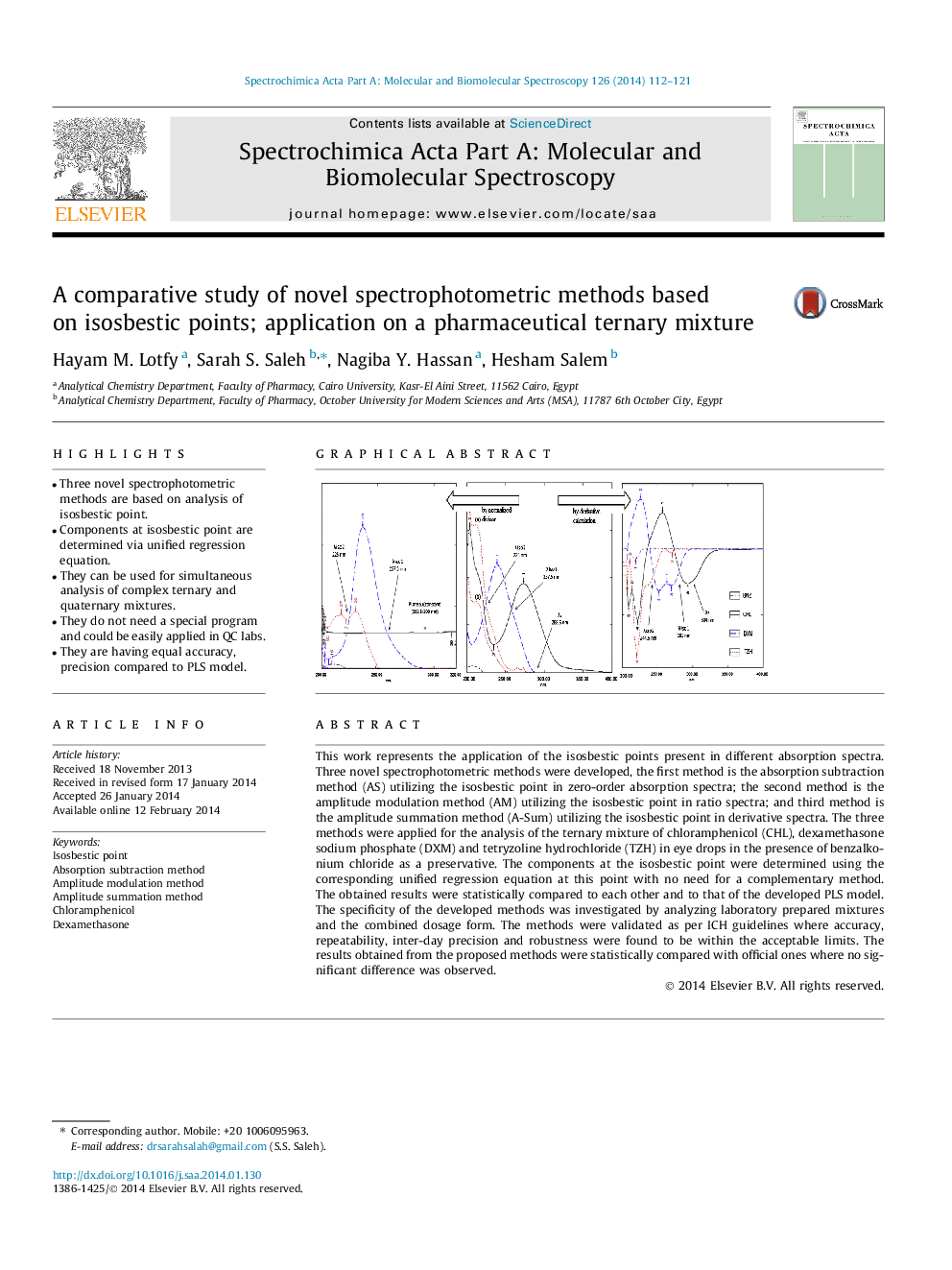| Article ID | Journal | Published Year | Pages | File Type |
|---|---|---|---|---|
| 1229936 | Spectrochimica Acta Part A: Molecular and Biomolecular Spectroscopy | 2014 | 10 Pages |
•Three novel spectrophotometric methods are based on analysis of isosbestic point.•Components at isosbestic point are determined via unified regression equation.•They can be used for simultaneous analysis of complex ternary and quaternary mixtures.•They do not need a special program and could be easily applied in QC labs.•They are having equal accuracy, precision compared to PLS model.
This work represents the application of the isosbestic points present in different absorption spectra. Three novel spectrophotometric methods were developed, the first method is the absorption subtraction method (AS) utilizing the isosbestic point in zero-order absorption spectra; the second method is the amplitude modulation method (AM) utilizing the isosbestic point in ratio spectra; and third method is the amplitude summation method (A-Sum) utilizing the isosbestic point in derivative spectra. The three methods were applied for the analysis of the ternary mixture of chloramphenicol (CHL), dexamethasone sodium phosphate (DXM) and tetryzoline hydrochloride (TZH) in eye drops in the presence of benzalkonium chloride as a preservative. The components at the isosbestic point were determined using the corresponding unified regression equation at this point with no need for a complementary method. The obtained results were statistically compared to each other and to that of the developed PLS model. The specificity of the developed methods was investigated by analyzing laboratory prepared mixtures and the combined dosage form. The methods were validated as per ICH guidelines where accuracy, repeatability, inter-day precision and robustness were found to be within the acceptable limits. The results obtained from the proposed methods were statistically compared with official ones where no significant difference was observed.
Graphical abstractFigure optionsDownload full-size imageDownload as PowerPoint slide
